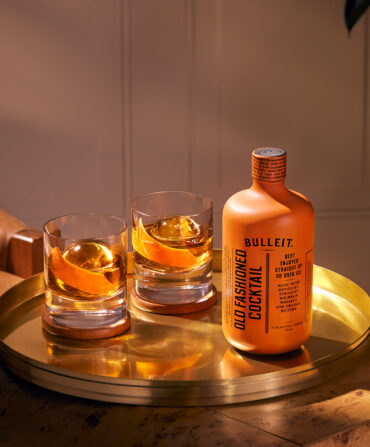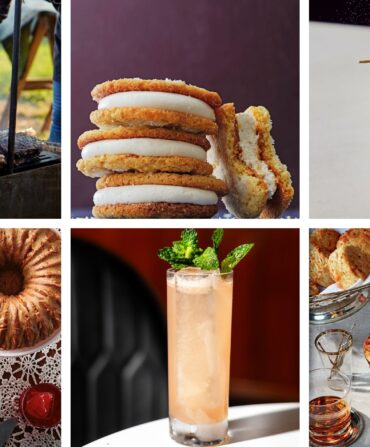Bourbon tasting is not a test. Aside from certain certification programs, there are no wrong answers. And yet, especially in a group setting, it can be intimidating to put words to what you’re smelling and tasting in a snifter of bourbon. Professionally written tasting notes may distinguish one bourbon from another, but they do little to demystify the experience. Who would want to taste old leather and pencil shavings, anyway? What does a cherry pit smell like?
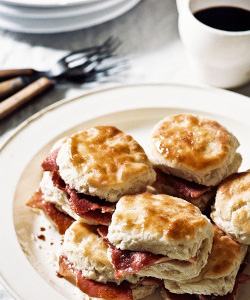
Melissa Rift, master taster with Old Forester, has a word of advice: Relax. “People can get so stressed about sensory analysis…and I’m like, ‘First of all, don’t be so hard on yourself,’” she says. “Sensory analysis is one part skill and two parts competence and language. You just have to build up your repertoire.”
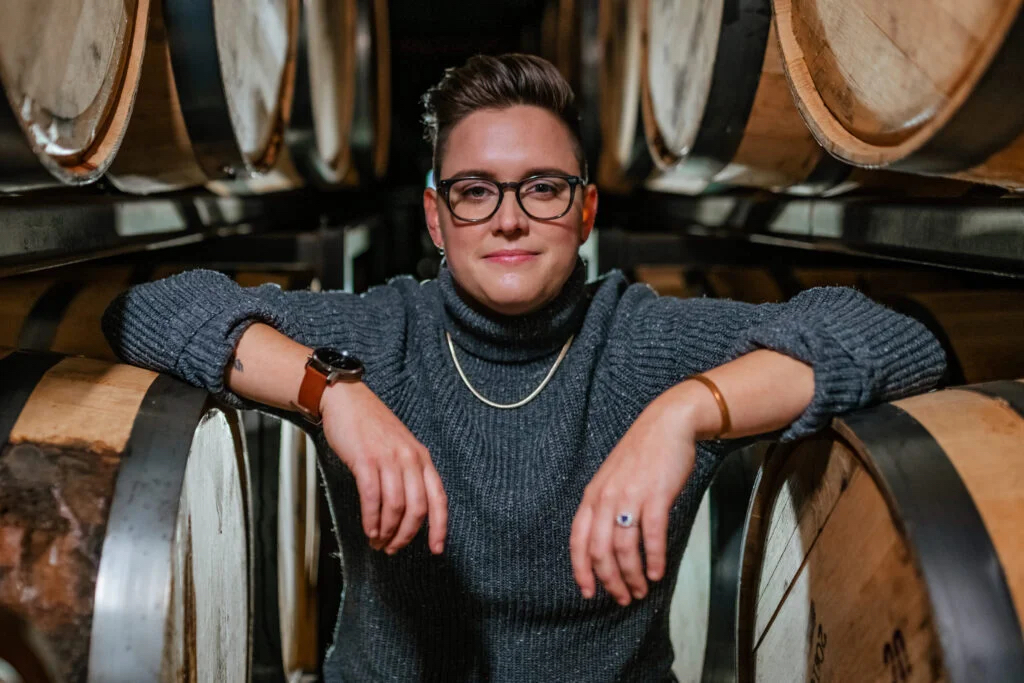
Whether she’s evaluating samples of an established bourbon for quality control, helping to develop a new product, writing tasting notes, or leading a group tasting, Rift’s approach is essentially the same: Nose, sip, taste.
The Nose
Sampling the bourbon neat in a tulip-shaped glass to best detect nuances, she’ll first nose the glass for several minutes and jot down her initial impressions. “Personally, I trust my nose more than my palate,” she says. Keeping your lips slightly parted and inhaling gently as you slowly bring the glass closer to your nose helps to reveal delicate aromas, as does lightly swirling the bourbon to release volatile molecules.
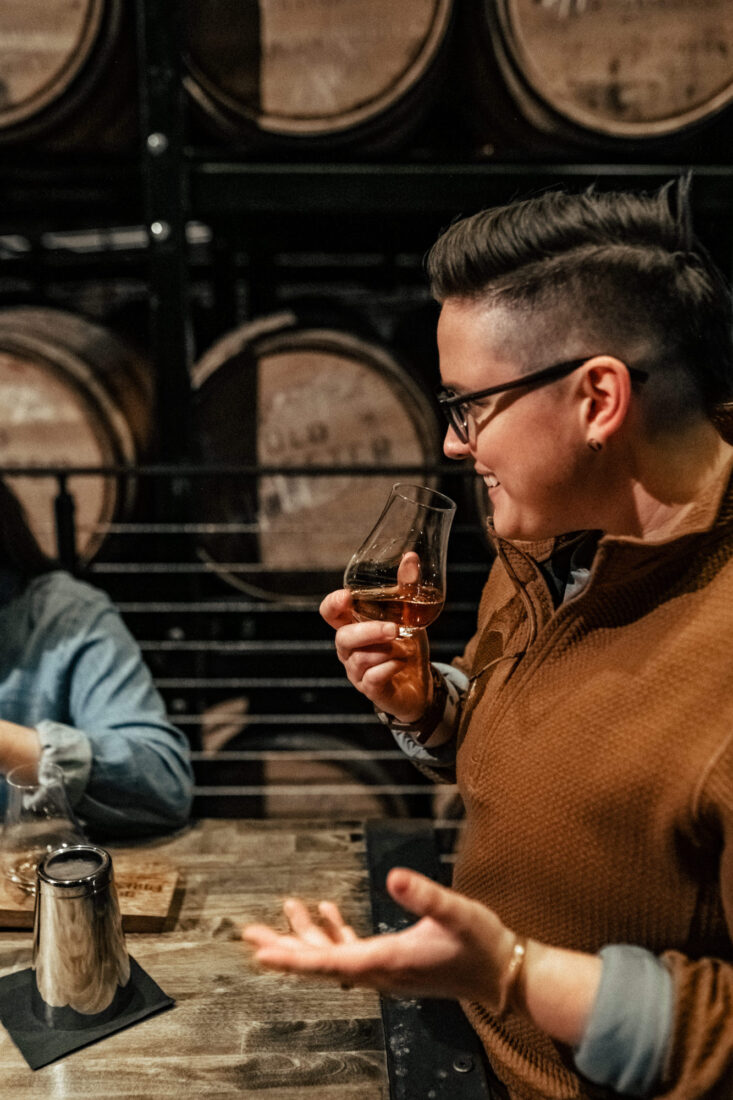
Sniffing the back of your hand is a good way to reset aromatic sensitivity, and some subscribe to the notion of people having a dominant nostril, which is why you’ll sometimes see tasters move the glass from side to side as they inhale. “Some people are not going to get a lot of difference from one nostril to the other, and for some, it might open their world up,” Rift says. “It’s all very personal and, again, there’s no right or wrong way.”
The Sip
Many experts suggest taking several small sips, letting the bourbon coat your palate, and waiting a few beats while your senses adjust to the sudden presence of high-proof alcohol. As the initial shock subsides, subtle flavors make their presence known. “I visualize a lot when I’m doing sensory analysis,” Rift says. “If I’ve gotten cherry and vanilla on the nose, I’ll think about those flavors during my first couple of sips and see if they show up. Then I’ll broaden my mindset…to see what is consistent and where it starts to feel more dynamic.”
She initially tastes all bourbons neat to see how they’re intended to taste from the bottle. But for higher-proof bourbons—anything 110 proof and above—she’ll then add a few drops of water to open up the whiskey and its full depth of flavors. And though Rift spits out most of her samples to keep both her palate and mind fresh when professionally tasting, she’ll swallow at least twice to evaluate a bourbon’s finish and to see what flavors linger as the sip dissipates. “Then I go back to the nose, because sometimes you notice new notes.”
The Taste
As for describing those impressions, it comes down to the ability to access and name specific sense memories roused by the multitude of chemical compounds created during fermentation, distillation, and maturation. Some of those memories may be indistinct and abstract, which is where visualization and free association can be helpful. “If someone is having a hard time putting their finger on a flavor, I’ll ask, ‘Is it making you think of a place or a color?’” Rift says. Occasionally, a flavor note reminds her of when she lived in Texas as a teen, and she’ll zero in on what in the environment or time period stirred the memory. “That can help lead you down the path.”
Rift outlines three tiers of specificity, moving from broad categories to precise descriptors like those included on a bourbon flavor wheel. Begin by thinking about general components like grains, wood, spice, sweet, and fruity and floral flavors, then home in on specifics. “If we’re talking fruit, is it a citrus fruit, orchard fruit, red fruit, or a dried fruit?” Rift says. “We’re not yet drilling down super far, but if you say, ‘I get red fruit and baking spice,’ then that’s a nice tier-two sensory analysis.” Then it’s time to get granular. “Is it black pepper, white pepper, or peppercorns? Are we talking candied citrus, fresh citrus, or citrus peel?”
It may seem tedious, but taking the time to be mindful of the experience and develop a bourbon vocabulary can help guide you to other bourbons you’re likely to enjoy. Nosing through a spice cabinet or a sensory training kit can help hone your ability to distinguish aromas. Tasting a new-to-you bourbon neat, on the rocks, and in a cocktail also reveals how its character can change. It’s all about personal preference.
“Deep sensory analysis can be a cool activity, but if you’re sipping on your whiskey and you’re happy with a ‘yay’ or a ‘nay,’ that’s a perfectly valid response,” Rift says. “Meet yourself where you are and have fun with it. It’s just whiskey.”



